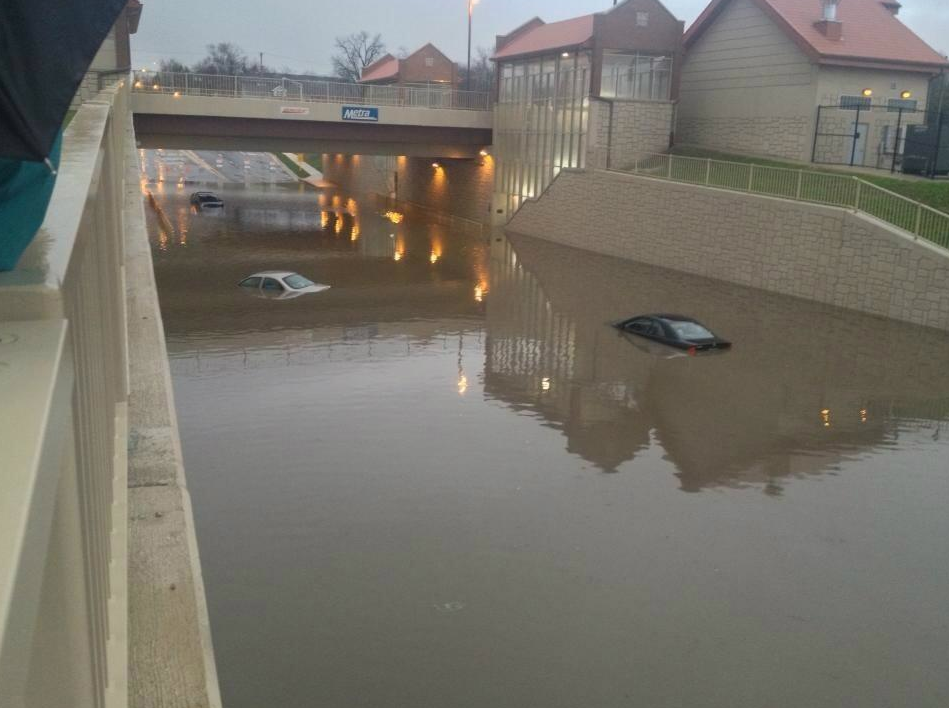It was Chicago’s turn (again) on Thursday: rain, then heavy rain, then more heavy rain. Soon the infrastructure as was swamped. Sewers spouted like blow holes, yards and then basements flooded, and highways turned into rivers and then lakes.
Too much water may seem an odd sign of global warming, and I don’t expect any sympathy in Australia, but one of the signs of climate change underway is more violent storms. Annual rainfall might not change much, yet the rains can be less frequent and more intense. The difference in impact between a rain and a downpour is considerable: much heavier loads on urban infrastructure, with more damage and less sustainability for agriculture. City planners in Chicago are drawing up strategies for the warming that will come in the next 50 years, but that doesn’t meant that water control is where it needs to be today.
This photo from a Twitter account was one of many that were being collected by local media. The practice of hooking into social media is a useful response to disasters and part of a larger skill set that is emerging among media providers at all levels. (Think of the collaborations large and small that developed immediately in response to the Boston Marathon bombing, for example.) It’s good to see that people are learning to adapt to environmental change, but that hardly excuses the more comprehensive inertia on behalf of doing little or nothing about the big picture. Society needs to both do all it can to slow down climate change while also investing heavily to prepare for the changes that are likely to occur in any case.
Perhaps that’s why I like this photo. Sure, it provides a great example of how infrastructure was overwhelmed and individuals sorely affected. There are at least three people in Chicago who obviously had a very bad day. Yet it also seems almost elegiac, with the dark water reflecting lights that are impersonal yet warm. The grey concrete structures and strip of grass could be part of a mausoleum. The cars have died, but instead of a scrapyard they seem to be waiting internment.
Thus, the photo captures several kinds of immobility. The drowned cars can no longer move, traffic has been brought to a halt, a dynamic civilization has been stopped by the inexorable persistence of nature, and a society’s inertia–its inability to adapt to changes of its own making–has been exposed.
Yet the photo does more than expose ecological vulnerability and political stasis. It also adds something: a contemplative tone. The lack of movement, activity, productivity, and other signs of a society on the go is framed as if one were in a Japanese garden. The artful quietude and serene tensions suggest that this is not a disaster but rather a place and time for reflection on living in harmony with the world. Human craft and natural processes can be beautifully aligned, or they can be made into a game of chance where the only thing left to do is pretend it’s not so bad.
And once the roads are drained and the basements dried, who will take the time to think about what is too easily forgotten or denied. The disaster can contain a hidden gift–the time to reflect on the need for deep change and with that the possibilities for more artful living.
Photograph by Maddy Clary.

Discussion